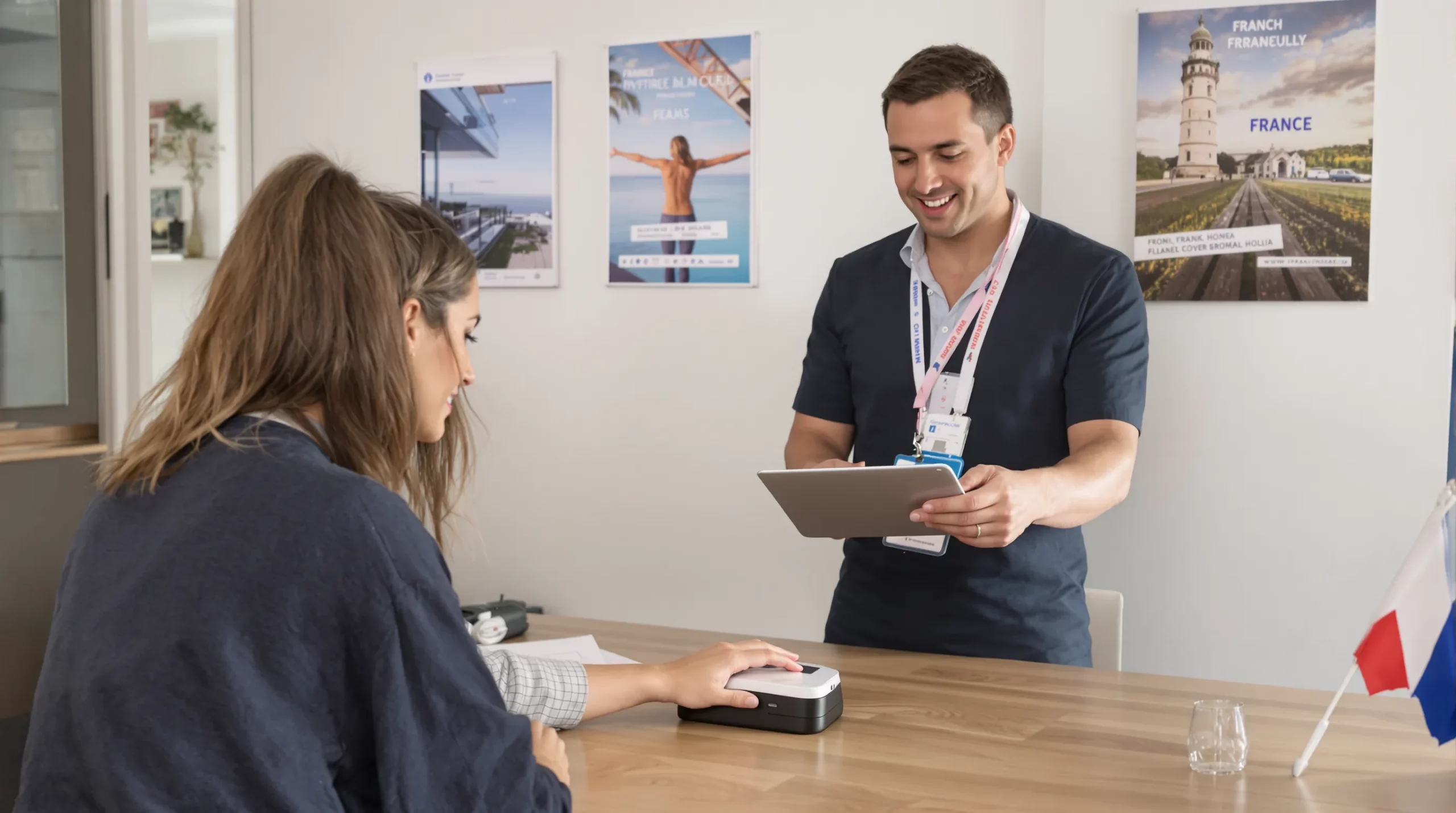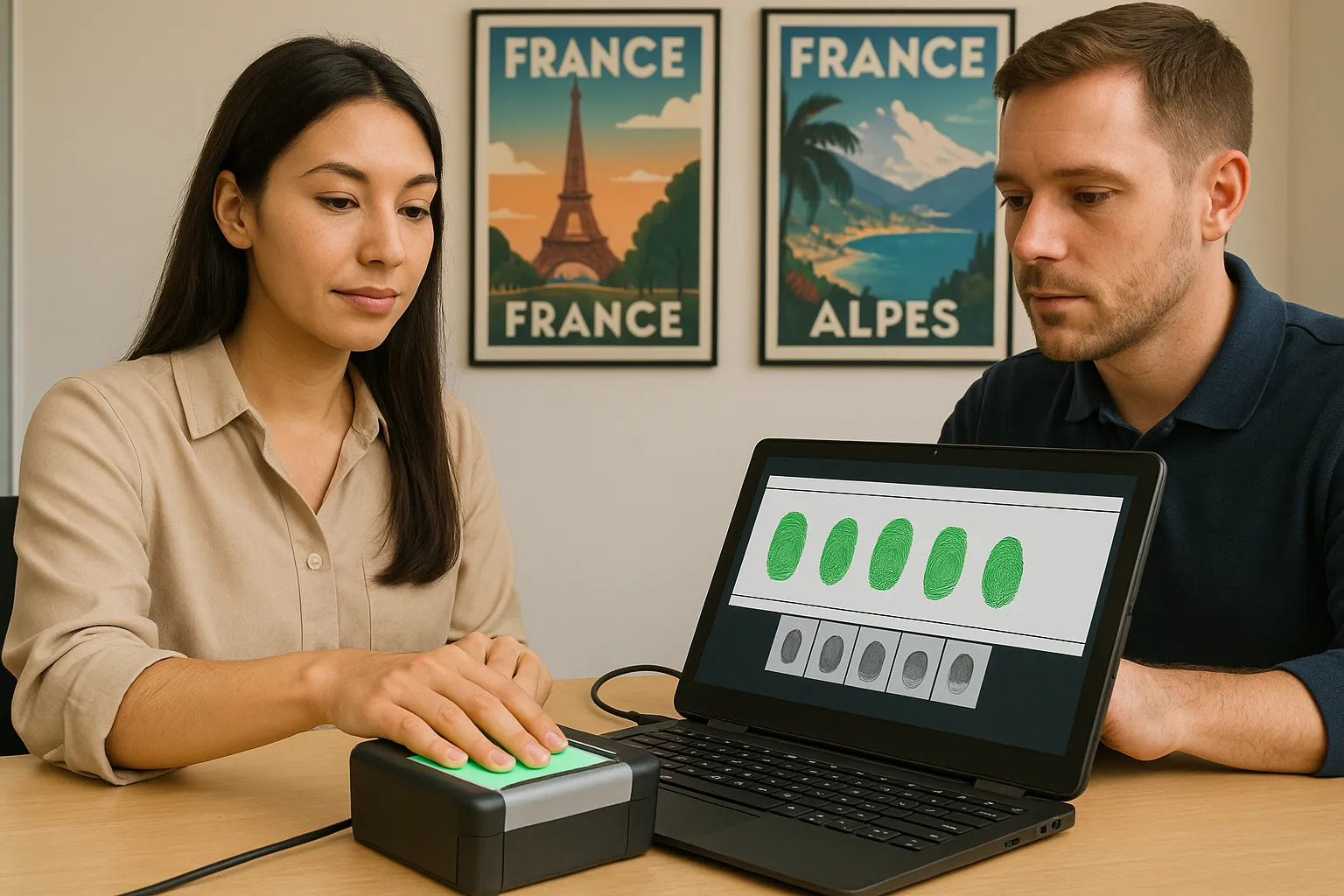Remote Biometric Collection Pilot Projects: Are You Eligible Outside France?

France’s border posts no longer have a monopoly on fingerprints. Since late 2024 the Ministry of the Interior has been quietly testing “collecte biométrique à distance” – a system that lets some applicants scan their fingerprints and face from abroad without ever setting foot in a consulate. The experiment, extended by the Order of 14 May 2025 (JORF n°0115), promises to slash travel costs and speed up visa and residence-permit files.
But the pilot is narrow. Only certain nationalities, permit types and geographic areas qualify. Below you’ll learn exactly who can take advantage of remote biometric collection, how the process works and what to do if you fall outside the current testing zones.
Why France Is Testing Remote Biometrics
- 3.2 million sets of fingerprints were taken by French posts worldwide in 2024 (Ministry statistics).
- Nearly 18 % of visa applicants had to travel more than 300 km to reach a biometric centre the same year (Council of State impact study, October 2024).
Digitising collection answers two challenges:
- Reduce carbon-heavy “biometric tourism” (flights or overnight coach journeys just to reach a TLScontact or VFS office).
- Alleviate heavy backlogs at big consulates after the COVID-19 and 2024 Olympic spikes.
The Interior Ministry therefore authorised certified private providers to deploy secure mobile kits and encrypted apps capable of capturing ISO-compliant prints and a live facial image. Those data are uploaded in real time to the VISABIO database used for both visas and cartes de séjour.
Legal Framework & Timeline
| Date | Legal Instrument | What It Changed |
|---|---|---|
| 29 Dec 2023 | Decree n° 2023-1452 | Allowed biometric data to be taken “outside diplomatic premises” on an experimental basis. |
| 14 May 2025 | Interior Ministry Order | Extended the pilot to new countries and introduced home-collection for immobile applicants. |
| 1 Jan 2026 (planned) | Draft “ANEF 2.0” decree | Could make remote collection permanent and open it to naturalisation applicants. |
Are You Inside the Pilot Zone?
The map is still limited. As of August 2025, eleven foreign jurisdictions participate:
| Region | Countries / Territories | Eligible Permit & Visa Categories |
|---|---|---|
| North America | Canada, United States | Long-stay visas (>90 days), student, talent passport, family reunion |
| Latin America | Brazil | Same as above |
| Africa | Morocco, Senegal, Kenya, South Africa | Long-stay visas + first 4-year residence-permit renewals for holders currently abroad |
| Asia | India, Singapore, South Korea | Long-stay visas, residence-permit renewals, “Passeport Talent Monde” |
| Oceania | Australia | Long-stay visas only |
Important restrictions:
- Schengen short-stay visas (type C) still require in-person fingerprints every 59 months.
- Minors under 12 are excluded (no fingerprints are needed anyway).
- Diplomatic/official visas follow their own channels and aren’t in the test.
If you do not reside in one of the listed countries, you must still attend a standard consular biometric appointment, even if the nearest French centre is in another nation.
Step-by-Step: How Remote Collection Works
- Create/Log into your France-Visas account. During the “Appointment” step, eligible addresses trigger an extra button labeled Remote Biometric Pilot.
- Choose a capture mode. Two options appear:
- Mobile kit at an approved partner centre (often the same VFS office but in a pop-up location closer to you).
- On-site visit by a trained agent (reserved for applicants with medical mobility issues and subject to medical proof).
- Upload advance documents. The system demands your passport identity page, a selfie and proof of address to pre-match faces and reduce fraud.
- Pay the logistics fee. In pilot countries the fee is €35 on top of standard visa/residence-permit charges (payable online by card).
- Attend the 15-minute capture. You’ll sign a digital consent form, place four fingers then thumb on the scanner twice, and face a high-resolution camera. The agent checks liveness via head-turn and blink prompts.
- Receive confirmation. Within two hours you receive an encrypted PDF “Attestation de collecte biométrique” to upload back into France-Visas or ANEF. Processing then continues normally at the Paris back office.

Processing Time Impact
The Interior Ministry claims a 20 % reduction in median processing time for files using remote biometrics (9.6 days vs 12.1 days for comparable visas, Q1 2025 data). Real-world ImmiFrance clients report 8-14 calendar days, mainly because no consular slot needs to be found.
Security & Data Protection
All devices are FIPS-140-2 certified. Biometric data are immediately encrypted, transferred via a VPN to French government servers and auto-wiped from the tablet once the upload succeeds. The CNIL approved the protocol in deliberation n° 2023-118 but asked for yearly audits – the first is due December 2025.
Common Pitfalls (and How to Avoid Them)
- Low-quality prints due to dry skin. Moisturise your fingers beforehand and avoid hand lotion right before scanning (it causes glare).
- Wrong document format. Only PDF /A-1 files under 5 MB are accepted for the advance passport upload – several early applicants were blocked at step 3.
- Address mismatch. Your proof of address must show exactly the same address you entered in France-Visas, including apartment number. Otherwise the remote option disappears.
- Technical failure. If the internet connection drops, the session is void and you may need a new appointment. Always pick a centre rather than the home-visit option if your area has weak 4G.
Not Eligible? Alternative Routes
- Standard consular biometrics in any country where you are legally present.
- Fingerprints upon arrival – available only for Passeport Talent Monde and posted-worker ICT categories under Article R311-3 CESEDA.
- Inside-France enrolment at a prefecture if you are renewing a residence permit and have valid re-entry rights.
Undocumented migrants already living in France cannot benefit from the remote test; they must still book an in-person prefecture appointment. See our guide on Prefecture Checklist: Preparing Evidence of 8 Payslips for Work Regularization for those scenarios.
How ImmiFrance Can Help
- Eligibility screening. A 15-minute video call determines if your country, visa type and personal situation fit the pilot criteria.
- Document pre-check. We convert files into the exact PDF /A-1, 300 dpi format required to unlock the remote option.
- Priority slot booking. Our automated monitor grabs newly opened remote-kit appointments before they disappear.
- Post-capture follow-up. We track your application in ANEF and intervene if the biometric file stalls or fails quality control.
Book a free assessment at ImmiFrance.com and reduce both travel costs and stress on your journey to a French residence permit.
FAQ
Can I reuse fingerprints given for a Schengen visa in 2023? No. Long-stay visas and residence permits require fresh ten-print capture even if less than five years old.
Is the extra €35 logistics fee refundable if my visa is refused? Yes, it is automatically refunded to the original payment card within 14 days of a negative decision.
Can families attend the same remote session? Up to four appointments can be grouped back-to-back, but each adult still pays the €35 fee.
What happens if my prints are rejected for quality? You’ll receive an email within 48 hours with a link to reschedule at no additional cost. After two failures you must switch to a consular capture.
Will naturalisation applicants be included soon? A draft Interior decree proposes extending remote biometrics to naturalisation by decree files in 2026, but it is not yet in force.
Ready to confirm your eligibility and secure a remote biometric slot? Contact ImmiFrance today and move one step closer to living, working or studying in France without the costly consulate trip.
